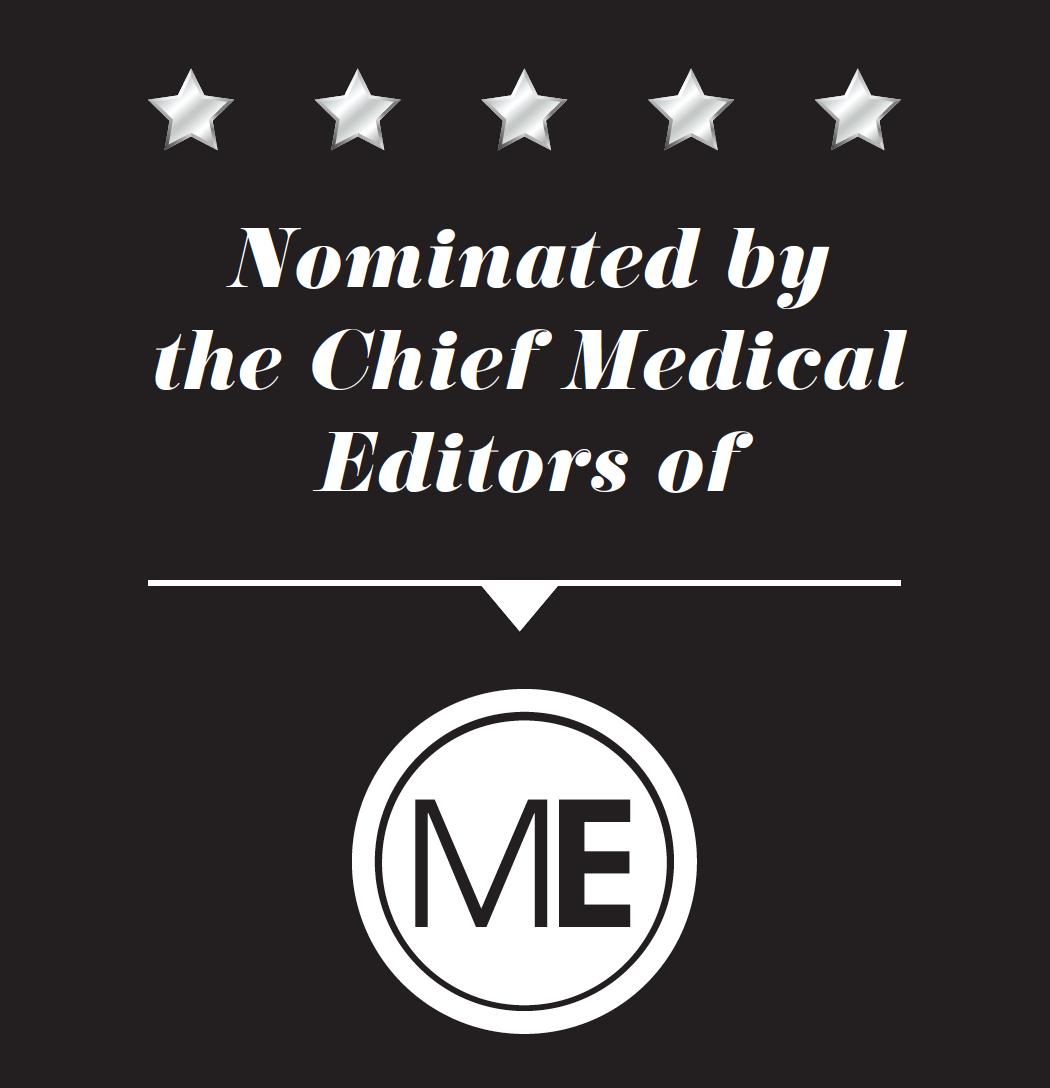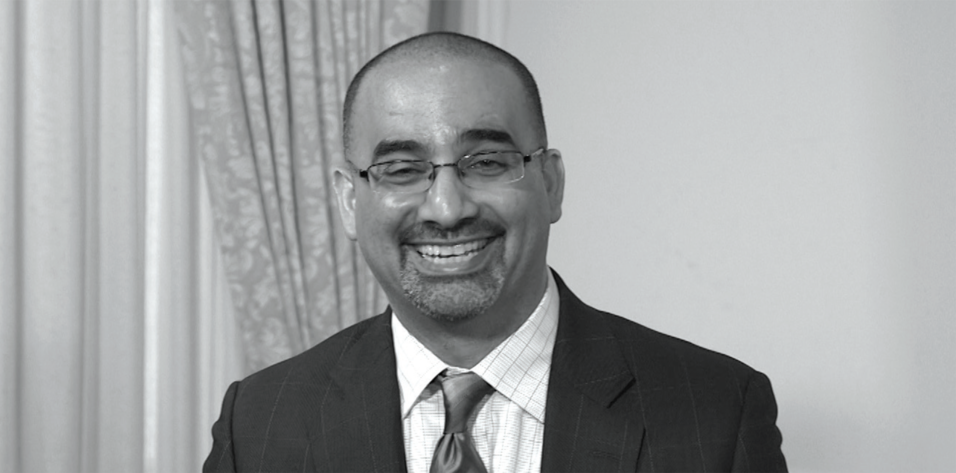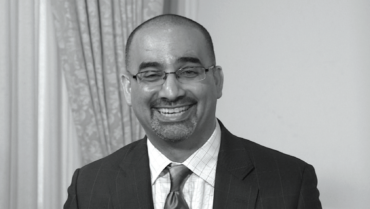Dr. Kahook, Professor of Ophthalmology, Vice Chairman, and the Slater Family Endowed Chair in Ophthalmology at the University of Colorado School of Medicine, has filed for more than 60 patents, several of which have been licensed by companies for development and commercialization. In this interview, Dr. Kahook discusses how he knows whether an idea is worth pursuing, the qualities he values in his team and industry partners, and his predictions for future innovations.
Interviewed by Callan Navitsky, MillenialEYE and Glaucoma Today Editor-in-Chief

BMC: Who or what drew you to ophthalmology?
Malik Y. Kahook, MD: When I started medical school, I knew I wanted to work with my hands in some surgical specialty. I was drawn to medicine because of the fact that physicians can be presented with a problem and do something tangible to solve that problem. Going through the rotations in medical school, it became obvious to me that ophthalmology was the best example of that. It is one of the few specialties in which a patient can present with a problem and the physician can supply an immediate solution that offers a major improvement in quality of life, such as taking out a cataract that is limiting his or her vision.
BMC: What is your fondest memory from training?
Kahook: I had a wonderful time during my ophthalmology training, so it is hard to pick one top memory. Getting the notice of acceptance for my first peer-reviewed paper was one moment that stands out. It was 2005, and at that time when you wrote a paper, you had to type up the paper, print several copies, put a floppy disk in an envelope, and mail it to the journal. Then, you would receive a snail-mail letter from the journal stating your paper was accepted—in this case, to the Journal of Cataract and Refractive Surgery.1 I remember that being pretty exciting.
BMC: Once you were in training, what about glaucoma and cataract attracted you to those subspecialties?
Kahook: Once I started performing anterior segment surgery, glaucoma specifically felt like an area with a huge unmet need for innovation. When I was training, we were learning surgeries that surgeons had been doing for decades—trabeculectomy, glaucoma drainage device implantation. Because of my interest in medical devices and innovation, glaucoma and cataract surgery were a natural fit for me. I realized that not only could I help patients immediately with the technology we had available, but I could also use my skill set to improve upon those devices and advance patient care.
BMC: Did you always foresee innovation being a big part of your career?
Kahook: I did. I have always been interested in figuring out how to make things better. My mother says that comes from being an obstinate child. It is hard for me to just accept something at face value and say, “It is this way because it has always been this way.” For a long time, glaucoma was one of the specialties in which that was often said: “We do trabeculectomy because that’s what we’ve always done.”
Even before medical school, I was interested in working with medical devices. I had previously attended nursing school and worked as a nurse, so I was always around medical devices and thinking of ways to improve patient care from a nursing standpoint. I found myself wondering, why do patients get decubitus ulcers when they don’t move around in bed; how can we improve their beds; and how can we improve the care of a diabetic patient through adherence aids and reminders?
For me, part of the draw to ophthalmology was that ophthalmologists use a variety of medical and surgical devices. I knew that would play a major role in my career. After my fellowship in Pittsburgh, when I started my position at the University of Colorado, I was provided startup funding for a device lab, so innovation was a part of my career trajectory from the beginning.
BMC: When an idea is in its infancy, what are some of the indicators you rely on to decide if it’s worth pursuing?
Kahook: We all have ideas, and most are realized when we are in clinic or in the operating room. The first thing I do when I think of an idea is to go back to old patents and textbooks and read through them to ensure no one else thought of it 20, 30, or 40 years ago. The overwhelming majority of the time, someone once tried something similar and there are data to show whether it worked. After doing my homework to see what was done in the past, I attempt to define the unmet need that the idea addresses. If I am going to spend the next 5 to 8 years of my life on it, it is important to identify the goals I am working toward. From there, I’ll map out the process.
One important point is to protect the idea as soon as possible and before sharing it externally. The patenting process and filing for a provisional application is extremely important because you can never be too safe. Once that is in place, I love talking to a few close friends and bouncing ideas off them. I’ll ask, “If you had this, how would you use it?” and “How would this help your patients compared with existing approaches?” Then I think about how to better communicate the idea and seek input from a wider range of colleagues. If everything looks clear, then I’m off and running toward achieving proof of concept and gathering early data.
BMC: Where do you do your best thinking?
Kahook: My best thinking is done when I’m not cooped up in my office. I do a lot of my meetings and take most of my calls while walking because it gives me a lot of clarity. I’m walking around my house right now. Also, I do most of my work in the early morning, when most people are still sleeping. Email, phone calls, and texts can occupy an enormous amount of our daily lives, so I try to get things done when the digital world is still in slumber.
BMC: Have you ever been passionate about an idea but, for one reason or another, chose not to pursue it?
Kahook: Often I pursue an idea and then have to let it go because it becomes obvious that it’s not going anywhere, despite the best intentions. I’ve worked on glaucoma therapies that rejuvenate the trabecular meshwork with different forces, whether mechanical or ultrasonic. However, in the process it became clear that, although the treatments were effective, the economic and regulatory situations would be too prohibitive to acquire the funding needed to push it forward. Many times, even if the idea is good and backed by proof of concept and positive patient data, it may not be practical to keep pushing it forward if the financing is not there and there is no business model behind it. Understanding when and how to pivot is one of the most important skill sets that any inventor can cultivate. It can save years and millions of dollars.
BMC: When you take an idea from bench to bedside, which are the most challenging steps?
Kahook: The most challenging part for me is to prioritize from a project standpoint. I have to ask, “Where is this going to fit into my life for the next 5 to 8 years?” and “Do I want to pursue this at the cost of leaving other projects behind?” We only have so much time during the day, and I’m always going through the cost-benefit analysis of how my bandwidth is split. The next step is protecting the idea from a patent standpoint, as that provides most of the value in the early phase. That leads to the next most difficult point, which is financing—working to get enough dollars in place so that the idea can be fully vetted.
From there, the focus shifts to creating a team around the idea. Most of the value built after the initial point of patenting comes from having the right team. I’ve been lucky throughout my career to have a few good people who have worked on several projects with me. If I had a recommendation for people who are thinking about pursuing innovation, it would be to insert yourself in a circle of like-minded people who are focused on the patient, and with whom you can travel from one project to the next.
BMC: Are those the characteristics you also look for in an industry partner?
Kahook: From an industry standpoint, it depends on the specific project. It could be as simple as looking for a partner that could finance and commercialize an idea. In some circumstances, specific companies can add a skill set to the team that is not present on the outside of that company—say we had a drug delivery device and a company had a specific drug that would team up well with that device. There are some circumstances in which you don’t seek out the biggest commercial partner but a strategic partner that specifically applies to the device being developed.
BMC: When any new idea is introduced, there are always critics. How do you deal with any skepticism or criticism you face?
Kahook: I welcome critics with open arms. Many times, the primary response from colleagues is, “Why didn’t I think of that?” That’s a good thing; I like to hear that. However, I also feel pretty good when I’m in a room presenting an idea and there is criticism about the approach or the unmet need. Then, I feel in my heart that, if we have the answers to address those criticisms, we’re onto something and are actually about to majorly disrupt the way that people are thinking.
Sometimes when I receive criticism, it’s feedback that I haven’t thought of before. I might take a step back, think about it, and realize that person’s right. I will admit that I hadn’t thought of the project in that way and decide we’re going to have to reevaluate it and see if we could pivot or if it’s something that will kill the project. Fortunately, there are a lot of smart people in ophthalmology who are willing to serve as advisors. I take criticism as an important part of discovery in the innovation process. I want to hear all of the negative feedback. I want to hear it early, and I want to feel confident that I can address it.
BMC: In addition to innovation, research is a big part of your career. What is the focus of your current research efforts?
Kahook: It takes a lot of time and money to develop a device lab, so from day 1, I used the startup funding I had to participate in basic imaging and drug delivery studies. From an economic standpoint, we had to show a return on investment that was sustainable while allowing flexibility to innovate with few constraints. I simultaneously worked to become familiar with strategic partners to secure funding, a lot of which was used to help prop up a team and build a device lab that would be able to sprint in the future. That has been running for a few years now, and today much of my focus is on innovating new devices for the anterior segment. We have some work in the posterior segment, but most of our efforts center on dry eye, cataract, and glaucoma. Some of the questions we strive to answer include how can innovations in the device space change the way we think about flow in the operating room and how can we access technology that can bring a meaningful change in our patient outcomes?
A lot of innovation today involves small steps to improve the efficiency or economics of a device. We are focused on completely disrupting the way we do things. We think more about grand ideas than small iterative processes now, and much of our lab meetings center around completely turning things upside down and addressing problems as if nobody has ever thought of them before. That has been our focus for the past 3 to 4 years, just wiping the slate clean and starting over. I’m lucky that the University of Colorado allows me the time to ask these questions and seek answers in a protected environment.
BMC: Where do you see the focus of innovation heading in the next 5 or 10 years?
Kahook: From a cataract standpoint, I think innovation moving forward will focus on how we can make cataract surgery more economically viable despite reimbursement cuts in health care. I think we’ll also focus on the potential of moving the procedure from the operating room into an office setting and continue to move away from ultrasound as the standard technique. I believe there will be a game-changing technology in the coming years that will allow us to make cataract surgery more efficient, and this technology will be accessible not just in the developed areas of the world but in developing countries as well. We have to start asking ourselves how surgical care can be delivered efficiently in areas where trained surgeons are few in number. These can be uncomfortable questions for surgeons to contemplate, but we are obligated to think about all aspects of health care delivery and do what is best for the patient.
In the glaucoma space, I think surgically we’re moving into a different phase of ab interno and angle-based surgery and implants that will need to be more robust from an IOP-lowering standpoint. Microinvasive glaucoma surgery (MIGS) has introduced a new way of thinking, and I believe most ophthalmologists would agree that the IOP lowering with early devices in this space has so far not been very robust. Newer devices on the market now are achieving more robust IOP lowering, and I see this trend continuing. Next-generation devices currently in development will likely leverage the same level of safety while also achieving more robust IOP lowering.
BMC: You have a very active career, you teach and travel, and you have a family at home. How do you manage to fit it all into your schedule?
Kahook: I have been married for 13 years and have a 5-year-old son. While it is important to balance what is being done at work and at home, I’ll tell you that I’m awful at it. More importantly, I think my wife would say the same thing. I think a lot of people struggle with the concept of work-life balance, no matter what they do. My wife is also a physician, so a lot of what we do doesn’t just stay at work. We talk about work over dinner, in the car, and when we go for walks. My wife is my best audience when it comes to my ideas. She will say, “That’s not going to work, don’t pursue that,” and often, she’s right. It is a good day when she smiles and says I’m onto something interesting.
When it comes to finding balance, I think it is important to strive to make as much time as possible for your personal life, but also try not to feel guilty about some of the work-related things you need to do. It is important to remember that nobody has that perfect balance.
BMC: If you had to nominate one creative mind in ophthalmology, whom would it be and why?
Kahook: Joel Schuman, MD, who is the Chair of Ophthalmology at New York University and a mentor and friend. I find his creativity to be at the top of our field, and his range of innovation is unmatched. Joel has patents that range from imaging the eye (he is an original inventor of OCT for ophthalmic use) to modulating wound healing and drug delivery. What is perhaps more important is that Joel has immense integrity and always strives to do the right thing. He’s an example that aspiring innovators can look up to and emulate.
1. Kahook MY, May MJ. Traumatic total iridectomy after clear corneal cataract extraction. J Cataract Refract Surg. 2005;31(8):1659-1660.




